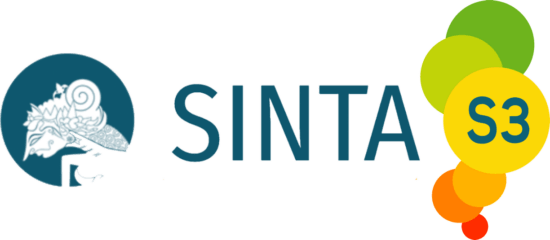Physical Activity and Employee Well-Being among Employees during The Covid-19 Pandemic in Jakarta
Keywords:
physical activity, employee well-being, Indonesian, pandemic covid-19Abstract
This study investigates the interrelation between physical activity and employee well-being during the COVID-19 pandemic in Jakarta. Drawing on existing literature, which predominantly links physical activity to health outcomes, this research aims to explore its correlation with employee well-being. Utilizing the International Physical Activity Questionnaire (IPAQ) and the Employee Well-Being (EWB) Scale, both translated into Indonesian, the study employed a correlation analysis to examine these dynamics. The findings indicate a statistically significant relationship between physical activity and employee well-being, with a correlation coefficient of r = 0.205 (p < 0.05). This research contributes to the broader understanding of physical activity's impact, extending beyond mere health benefits to encompass employee well-being, thus offering valuable insights for workplace health promotion strategies during unprecedented times like during the pandemic Covid-19.
References
References
Basso, J. C., & Suzuki, W. (2017). The Effects of Acute Exercise on Mood, Cognition, Neurophysiology, And Neurochemical Pathways: A Review. Brain Plasticity. doi:10.3233/bpl-160040
Blair, S. N., Kohl, H. W., Gordon, N. F., & Paffenbarger Jr, R. S. (1992). How much physical activity is good for health? Annual review of public health, 13(1), 99-126.
Brown, D. K., Barton, J. L., Pretty, J., & Gladwell, V. F. (2012). Walks4work: Rationale and study design to investigate walking at lunchtime in the workplace setting. BMC Public Health, 12, 1-10.
Brown, D. K., Barton, J. L., Pretty, J., & Gladwell, V. F. (2014). Walks4Work: Assessing the role of the natural environment in a workplace physical activity intervention. Scandinavian Journal of Work, Environment and Health, 40(4), 390-399. doi:10.5271/sjweh.3421
Carriedo, A., Cecchini, J. A., Fernández-Río, J., & Méndez–Giménez, A. (2020). COVID-19, Psychological Well-Being and Physical Activity Levels in Older Adults During the Nationwide Lockdown in Spain. American Journal of Geriatric Psychiatry. doi:10.1016/j.jagp.2020.08.007
Cheval, B., Sivaramakrishnan, H., Maltagliati, S., Fessler, L., Forestier, C., Sarrazin, P., . . . Boisgontier, M. P. (2020). Relationships Between Changes in Self-Reported Physical Activity, Sedentary Behaviour and Health During the Coronavirus (COVID-19) Pandemic in France and Switzerland. Journal of Sports Sciences. doi:10.1080/02640414.2020.1841396
Danna, K., & Griffin, R. W. (1999). Health and well-being in the workplace: A review and synthesis of the literature. Journal of Management, 25(3), 357-384.
Dinas, P., Koutedakis, Y., & Flouris, A. (2011). Effects of exercise and physical activity on depression. Irish journal of medical science, 180, 319-325.
Hamer, M., Endrighi, R., & Poole, L. (2012). Physical activity, stress reduction, and mood: insight into immunological mechanisms. Psychoneuroimmunology: Methods and protocols, 89-102.
Jaiswal, A., & Arun, C. J. (2021). Impact of Happiness-Enhancing Activities and Positive Practices on Employee Well-Being. Journal of Asia Business Studies. doi:10.1108/jabs-06-2021-0251
Jurakić, D., Pedišić, Ž., & Andrijašević, M. (2009). Physical activity of Croatian population: cross-sectional study using International Physical Activity Questionnaire. Croatian medical journal, 50(2), 165-173.
Kruk, J. (2009). Physical activity and health. Asian Pac J Cancer Prev, 10(5), 721-728.
Lindberg, C. M., Srinivasan, K., Gilligan, B., Razjouyan, J., Lee, H., Najafi, B., . . . Sternberg, E. M. (2018). Effects of office workstation type on physical activity and stress. Occupational and Environmental Medicine, 75(10), 689-695. doi:10.1136/oemed-2018-105077
Matias, T. S., Lopes, M. V. V., da Costa, B. G. G., Silva, K. S., & Schuch, F. B. (2022). Relationship between types of physical activity and depression among 88,522 adults. Journal of Affective Disorders, 297, 415-420. doi:10.1016/j.jad.2021.10.051
Meng, Y., Luo, Y., Qin, S., Xu, C., Yue, J., Nie, M., & Fan, L. (2021). The effects of leisure time physical activity on depression among older women depend on intensity and frequency. Journal of Affective Disorders, 295, 822-830. doi:10.1016/j.jad.2021.08.142
Neufer, P. D., Bamman, M. M., Muoio, D. M., Bouchard, C., Cooper, D. M., Goodpaster, B. H., . . . Laughlin, M. R. (2015). Understanding the Cellular and Molecular Mechanisms of Physical Activity-Induced Health Benefits. Cell Metabolism. doi:10.1016/j.cmet.2015.05.011
Page, K. M., & Vella-Brodrick, D. A. (2009). The ‘what’,‘why’and ‘how’of employee well-being: A new model. Social Indicators Research, 90, 441-458.
Penedo, F. J., & Dahn, J. R. (2005). Exercise and well-being: a review of mental and physical health benefits associated with physical activity. Current opinion in psychiatry, 18(2), 189-193.
Rampisheh, Z., Ramezani, M., Khalili, N., Massahikhaleghi, P., Hoveidamanesh, S., Darroudi, S., . . . Tayefi, B. (2022). Physical Activity and Well-Being Status Among Employees of University of Medical Sciences. Medical Journal of the Islamic Republic of Iran. doi:10.47176/mjiri.36.97
Richardson, C. R., Faulkner, G., McDevitt, J., Skrinar, G. S., Hutchinson, D. S., & Piette, J. D. (2005). Integrating physical activity into mental health services for persons with serious mental illness. Psychiatric services, 56(3), 324-331.
Roshanaei-Moghaddam, B., Katon, W. J., & Russo, J. (2009). The longitudinal effects of depression on physical activity. General Hospital Psychiatry, 31(4), 306-315.
Vancampfort, D., Stubbs, B., Ward, P. B., Teasdale, S., & Rosenbaum, S. (2015). Integrating physical activity as medicine in the care of people with severe mental illness. In (Vol. 49, pp. 681-682): Sage Publications Sage UK: London, England.
Werneck, A. O., Stubbs, B., Kandola, A., Oyeyemi, A. L., Schuch, F. B., Hamer, M., . . . Silva, D. R. (2022). Prospective Associations of Leisure-Time Physical Activity with Psychological Distress and Well-Being: A 12-Year Cohort Study. Psychosomatic Medicine, 84(1), 116-122. doi:10.1097/PSY.0000000000001023
Zheng, X., Zhu, W., Zhao, H., & Zhang, C. (2015). Employee well‐being in organizations: Theoretical model, scale development, and cross‐cultural validation. Journal of Organizational Behavior, 36(5), 621-644.
Downloads
Published
How to Cite
Issue
Section
License
Copyright (c) 2024 Novika Grasiaswaty, Qiftiyah Damiati Putri

This work is licensed under a Creative Commons Attribution-NonCommercial-ShareAlike 4.0 International License.
Authors who publish with this journal agree to the following terms:- Authors retain copyright and grant the journal right of first publication with the work simultaneously licensed under a Creative Commons Attribution License that allows others to share the work with an acknowledgement of the work's authorship and initial publication in this journal.
- Authors are able to enter into separate, additional contractual arrangements for the non-exclusive distribution of the journal's published version of the work (e.g., post it to an institutional repository or publish it in a book), with an acknowledgement of its initial publication in this journal.
- Authors are permitted and encouraged to post their work online (e.g., in institutional repositories or on their website) prior to and during the submission process, as it can lead to productive exchanges, as well as earlier and greater citation of published work (See The Effect of Open Access).

 Novika Grasiaswaty
Novika Grasiaswaty
 Universitas YARSI, Indonesia; Adam Smith Business School University of Glasgow
Universitas YARSI, Indonesia; Adam Smith Business School University of Glasgow












